A decade after the beginning of the great recession of 2008, how has the United Kingdom economy recovered?
GDP
Since 1992, the size of the UK economy, measured by adding up the value of all the goods and services produced in the country, had been getting bigger every quarter. But in April to June 2008, it began to fall. After 63 quarters of expansion, the UK economy got smaller for five quarters in a row.
The economy kept getting smaller for five successive quarters. Two or more consecutive quarters of falling gross domestic product (GDP) is commonly called a recession.
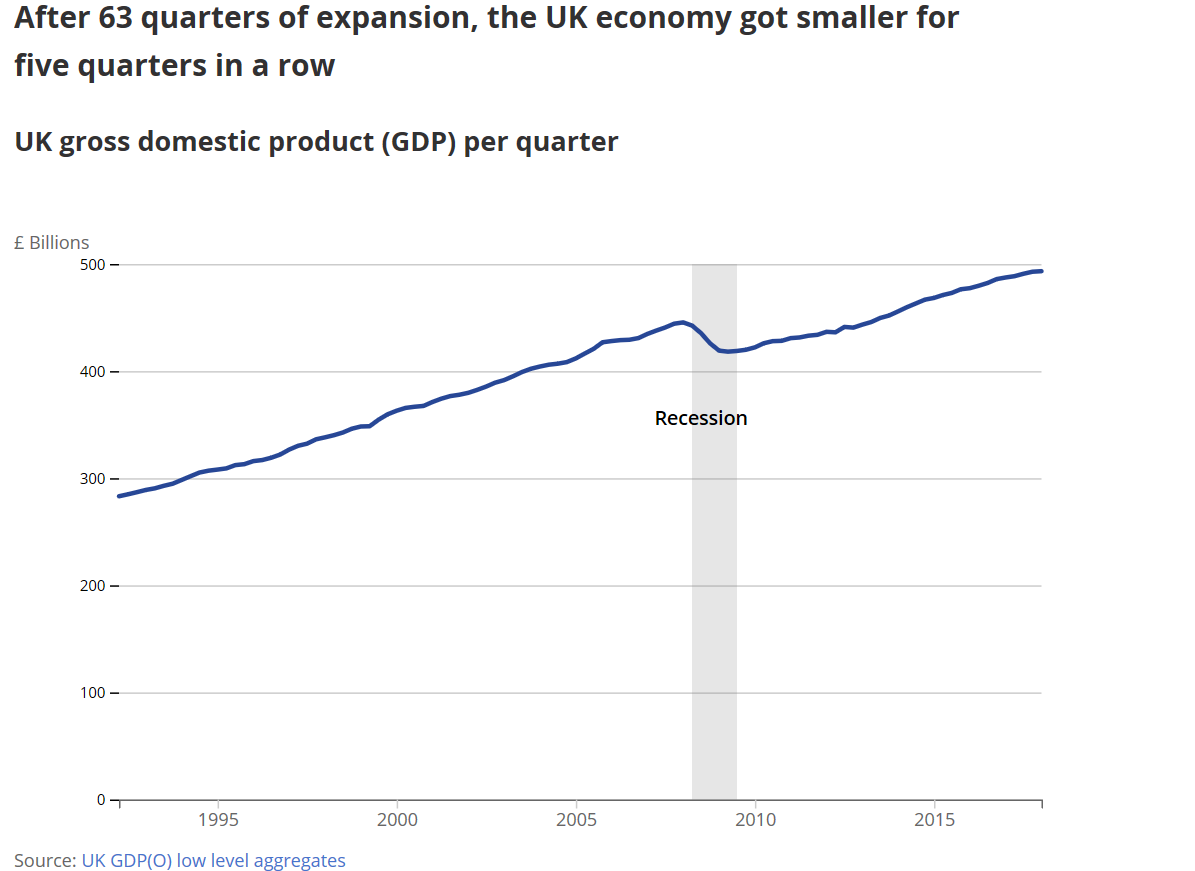
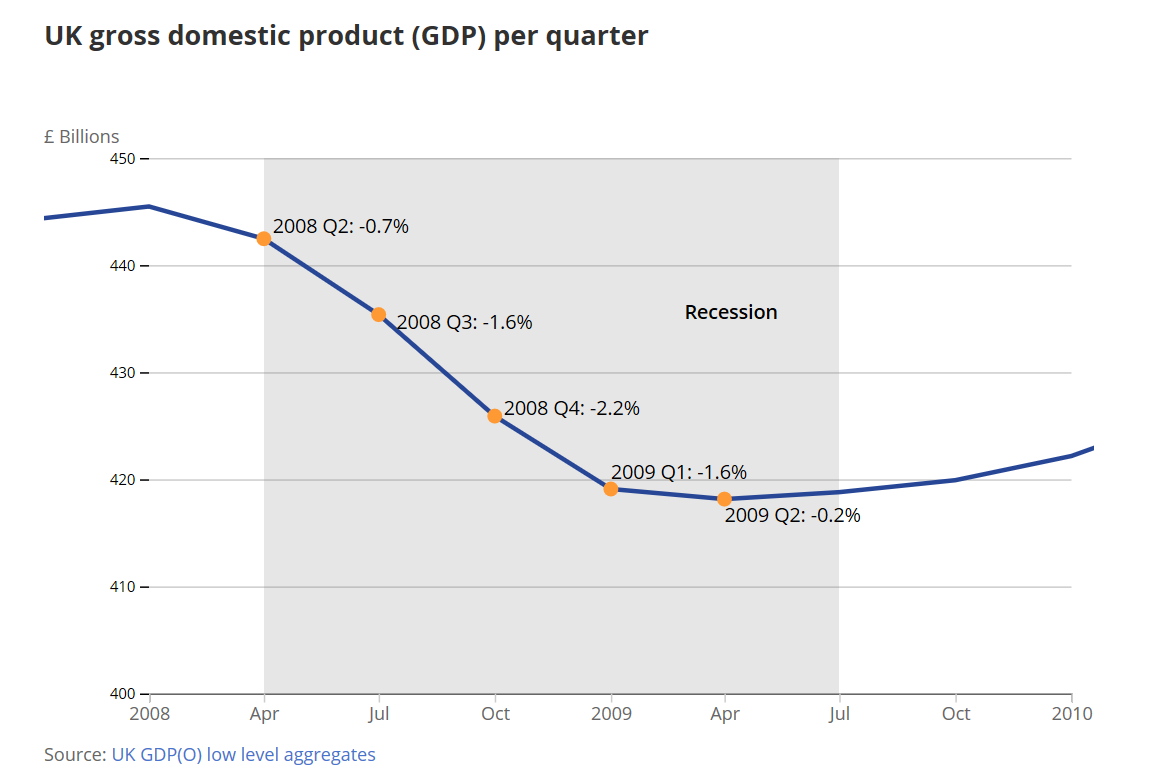
Having shrunk by more than 6% between the first quarter of 2008 and the second quarter of 2009, the UK economy took five years to get back to the size it was before the recession. The latest data show that the UK economy is now 11% bigger than it was before the recession.
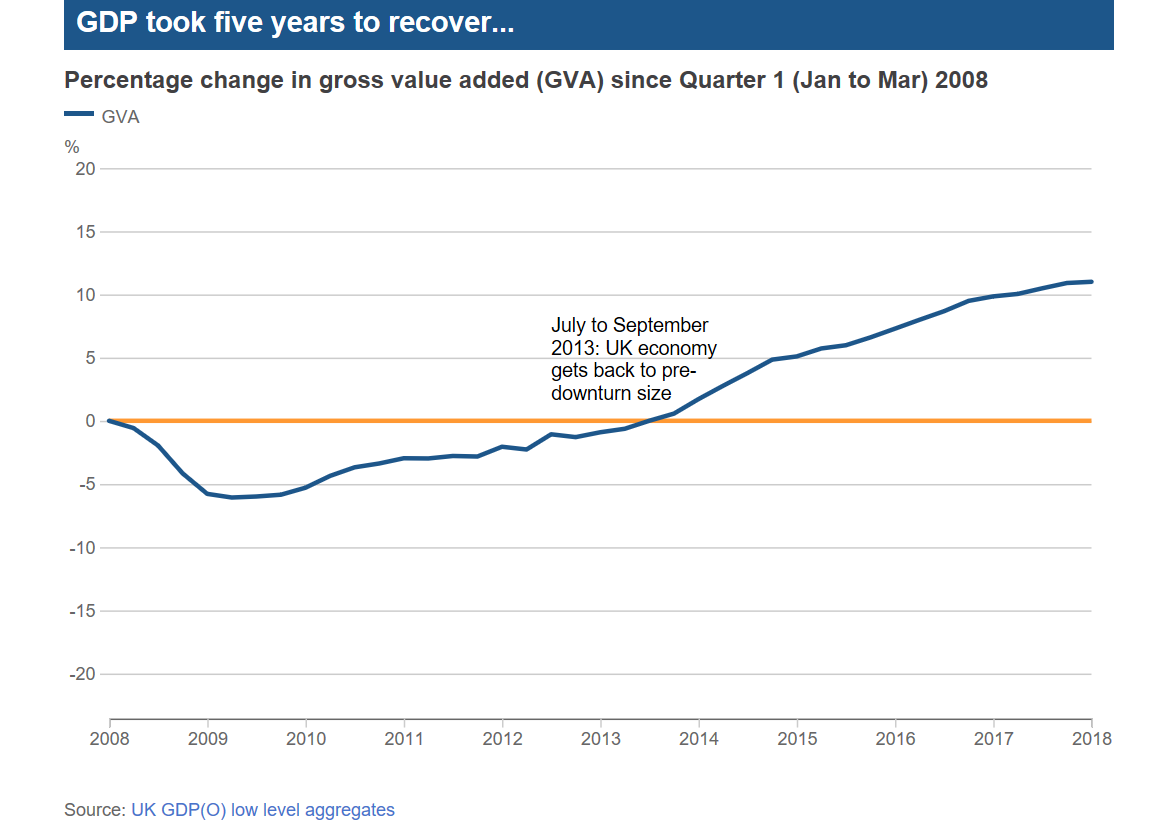
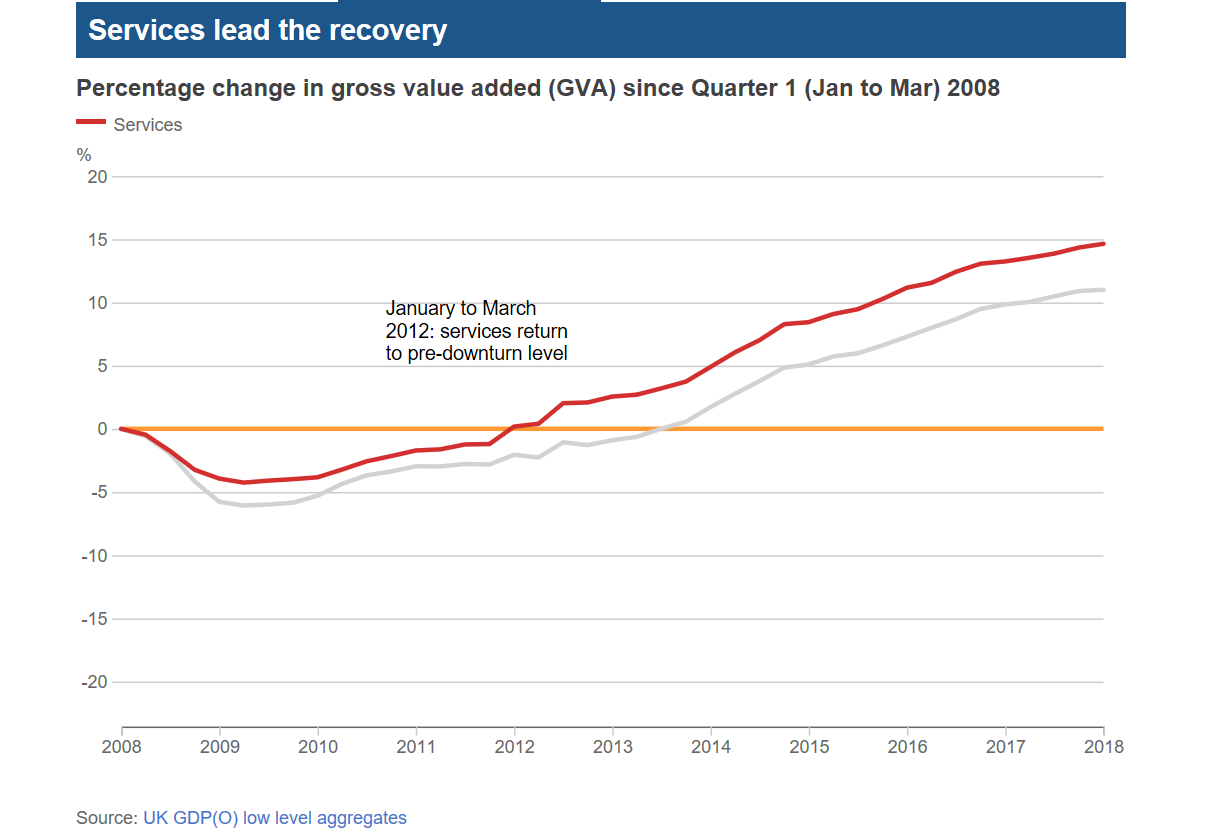
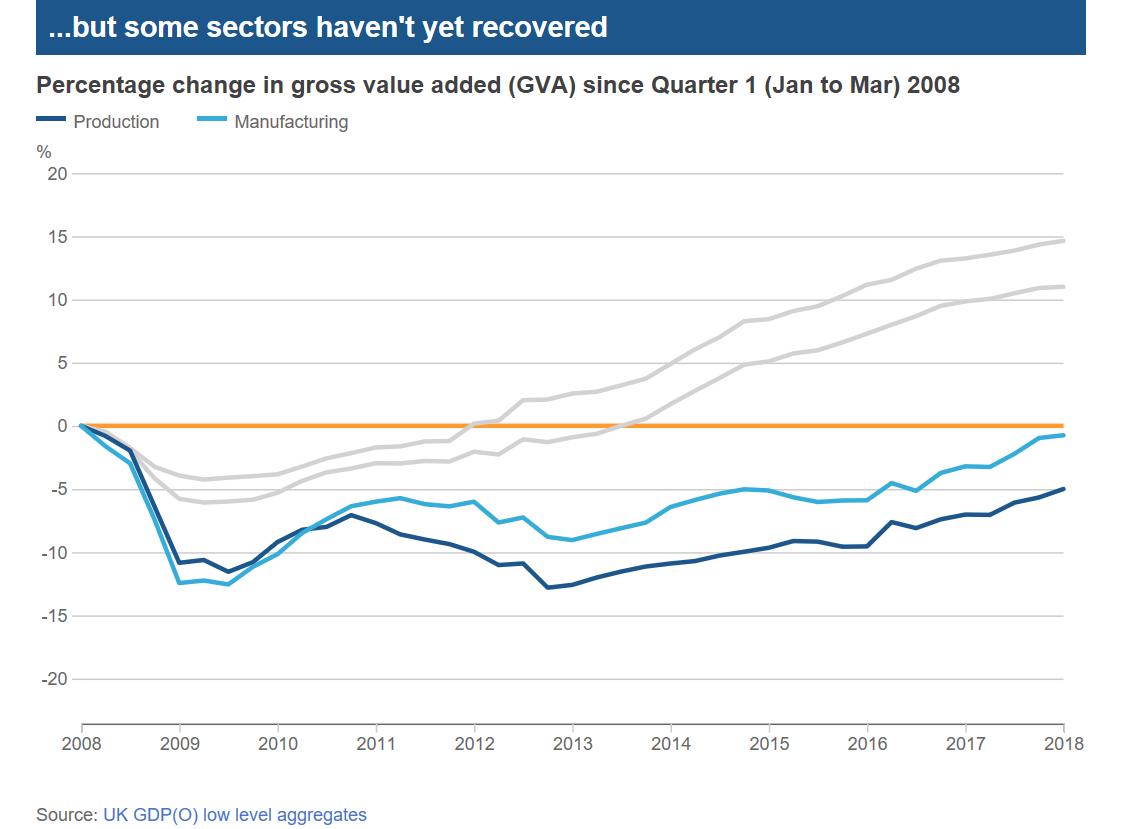
Unemployment
As the economy got smaller, lots of people lost their jobs and employers stopped hiring. By the end of 2011, almost 2.7 million people were looking for work. The quarterly unemployment rate reached 8.4%, the highest rate since 1995.
Unemployment had returned to its pre-downturn rate at the end of 2015, and since then it has continued to fall – reaching a record low of 4.3% in the third quarter of 2017 before rising slightly at the end of the year.
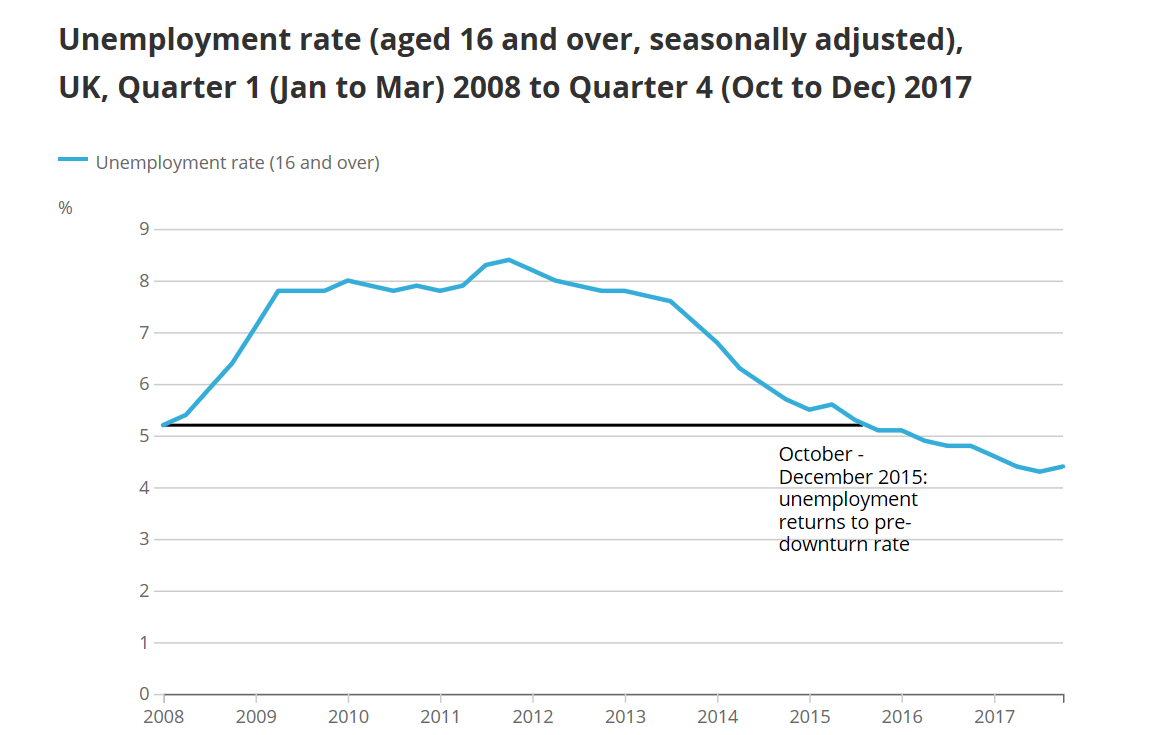
Earnings or Wages
Earnings have lagged prices for most of the decade since the start of the recession.
In the public sector, a pay freeze (from 2011) and pay cap (from 2013) kept wage rises below inflation, while in the private sector wage growth was also slow.
There was a two-year period beginning around July 2014 when wages rose in real terms – this was due largely to the fall in the price of oil causing prices to come down too.
However, between November 2015 and October 2016, the pound fell in value by 20%, including a record 6.5% fall between June and July 2016 following the EU referendum. This meant it was more expensive to import goods and services, so prices rose, and earnings are again failing to keep up with prices.
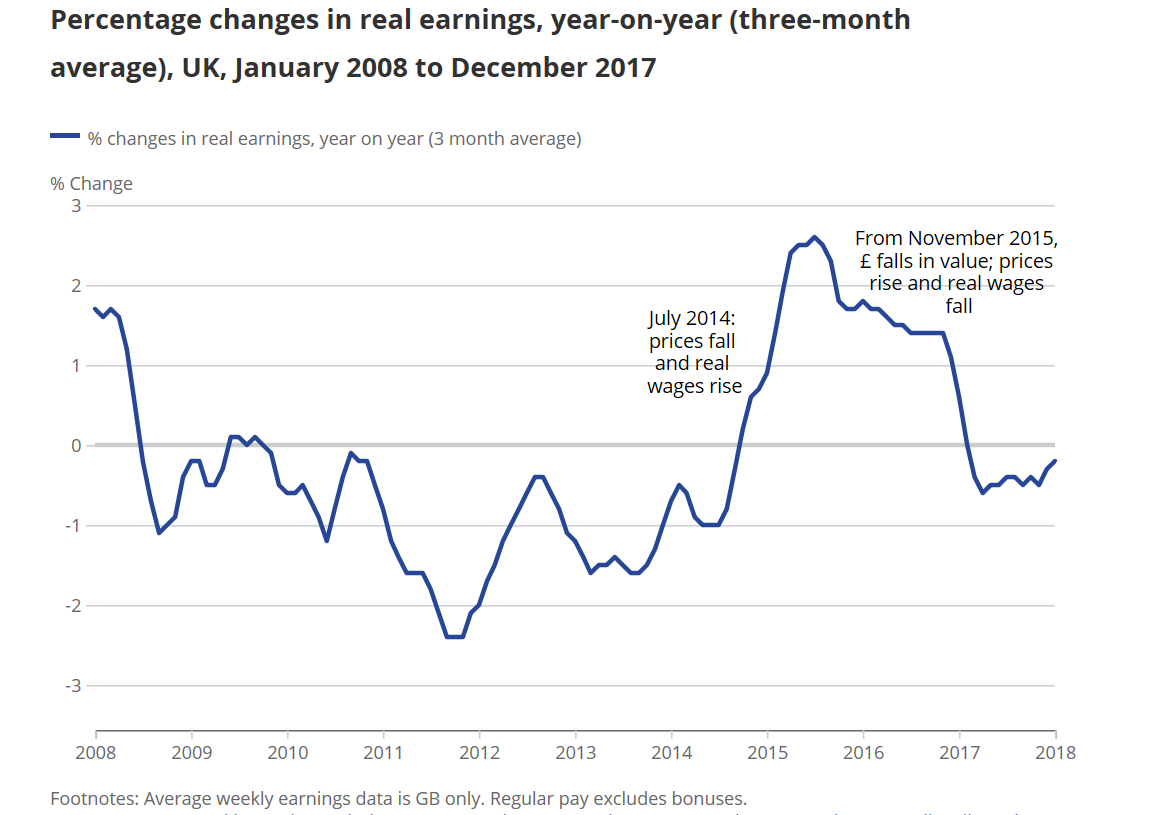
Related:
How much has really changed since 2008? Part 1 of 3